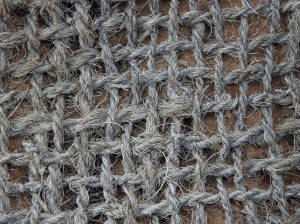To clarify a point from my last post, the cancer research I would like to see completed would be on the use of a vegan diet with ginger as a preventative or as a cancer treatment. Adding fluoride or bromide to 6-shogaol was simply an example of how other natural products have been made into chemicals that could be patented in the past.
The difficulty with designing clinical research studies is the ethics involved with substituting an experimental treatment for a treatment that has evidence supporting its value. A person with cancer is more likely to be allowed into experimental trials only after they have already been through other anti-cancer treatments that were unsuccessful – but which likely left their bodies in a weakened condition. Trying an experimental treatment as a first attempt would have to be with the patient’s understanding of the possible risks of not using the standard of care treatment instead. Maybe the standard treatment for the patient’s type of cancer provides the 22.5 months of survival on average but the experimental treatment wouldn’t have any history of clinical trials to offer as a comparison. So frequently the experimental treatments are only offered to patients whose cancer has returned or that had failed to respond to standard treatments.
Prostate cancer is a very slow growing cancer that is frequently a benign problem compared to other types of cancer. It is said that more men die with prostate cancer than die from prostate cancer — and surgery in the area sometimes leaves men with worse problems so a watch and wait approach is being recommended more often. A diet based research study designed for patients in the watch and wait phase of prostate cancer treatment might be a reasonably ethical experimental design.
The experimental dietary treatment that I would propose would be based on a vegan diet, possibly with fish, and which is low in arachidonic acid rich foods and is not excessive in total calcium foods or supplements and which provides adequate amounts of CLA fats, [8, 12, 13] and with ginger powder daily, approximately a half teaspoon per day or equivalent ginger root cooked in food — or with an appropriate amount of the purified active compound, 6-shogaol. However, use of the whole root or ginger powder or mixed extract might provide other beneficial phytochemicals, from a summary I wrote years ago:
- In humans, mice, and in petri dish studies, ginger has been found to inhibit the action of 5-LO from converting as much arachidonic acid into 5-HETE and slowing prostate cancer cell growth. [13]
- *The cancer cells replicate human enzymes that increase membrane breakdown and release of arachidonic acid which is then converted into a form the cancer cells can use as an energy source. The ginger extract stopped the step that would have converted the arachidonic acid into the form, 5-HETE, that could be used as a food source for the cancer cells. [13] So adding ginger to the diet might make avoiding arachidonic acid containing foods less of an issue – but moderation is usually still a good idea. Arachidonic acid is an omega 6 fatty acid found in egg yolks,chicken, liver and animal fats. [14, 15] Arachidonic acid can also be formed out of linoleic acid which is found in seeds and nuts and most vegetable oils. [15]
Approximately a half teaspoon of ginger powder was the amount found helpful for reducing pain for arthritis patients, but I still haven’t found the exact reference link, sorry. A different study on muscle pain due to exercise found that two milligrams of ginger powder given daily prior to the episode of strenuous exercise (approximately 3/4 teaspoon, which was given in capsules) helped reduce the exercise induced muscle pain by 25%. [9, 10] Heat treatment of the ginger powder was not found to give any further reduction in muscle pain in that study however for cancer prevention heat treatment might be increasing the amount of the chemical that is active against cancer, 6-shogaol.
Clinical results that showed benefit for the men with prostate cancer in the watch-and-wait phase might than be preliminary evidence to support trying the treatment plan for men with more advanced stages of prostate cancer or for women with breast cancer — with their understanding of the potential risks of using an alternative treatment instead of the standard of care treatment.
As a nutrition focused member of a multi-disciplinary team I would count on other specialists to work out the details related to stages of cancer and assessment, etc. — no one works alone these days.
/Tangent: 6-shogaol and two other phytochemicals found in ginger have also been found to help promote bronchodilation in asthma patients. [11]/
/Disclosure: This information is provided for educational purposes within the guidelines of fair use. Information is not a substitute for individual health guidance. Please see a health professional for individual health care purposes./

